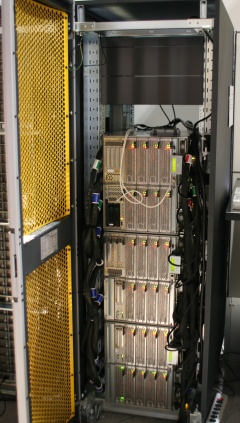NASA gets SGI 2048-core Itanium 2 supercomputer


This massive supercomputer is the most powerful single node computer in the world (based on SPECint_rate2006 and SPECfp_rate2006 database) and it has one of the largest single system memory pool in the world. For some applications that simply can't be effectively broken down in to smaller tasks that a cluster can handle using smaller nodes because of excessive communications overhead, this is really the only system that can crunch those hard problems.
To give you some idea how powerful this system is, a 256-core version of the SGI Altix 4700 has a SPECfp_rate2006 score of 3507 and a SPECint_rate2006 score of 2970. The biggest 16-core Intel X7350 2.93 GHz server scores 119 on SPECfp_rate2006 and 214 on SPECint_rate2006. The biggest 16-core AMD Barcelona server has a SPECfp_rate2006 score of 136 and a SPECint_rate2006 score of 160. A 16-core IBM Power6 has a SPECfp_rate2006 score of 428 and a SPECint_rate2006 score of 478 though the latest 32-core version probably has double that performance. But even the Power6 is dwarfed by the 256-core SGI machine let alone what a 2048-core version can do.
The Altix 8200 rack includes the 20 gbps InfiniBand switches on the sides for the cluster interconnect and the racks can be chained together with InfiniBand. NASA has for the most part used very large shared memory systems like the Altix 4700 above but they've just started buying the clustered systems.
.
.
.
.
.